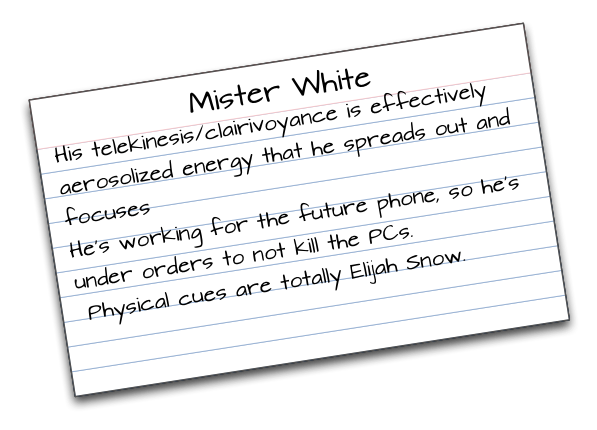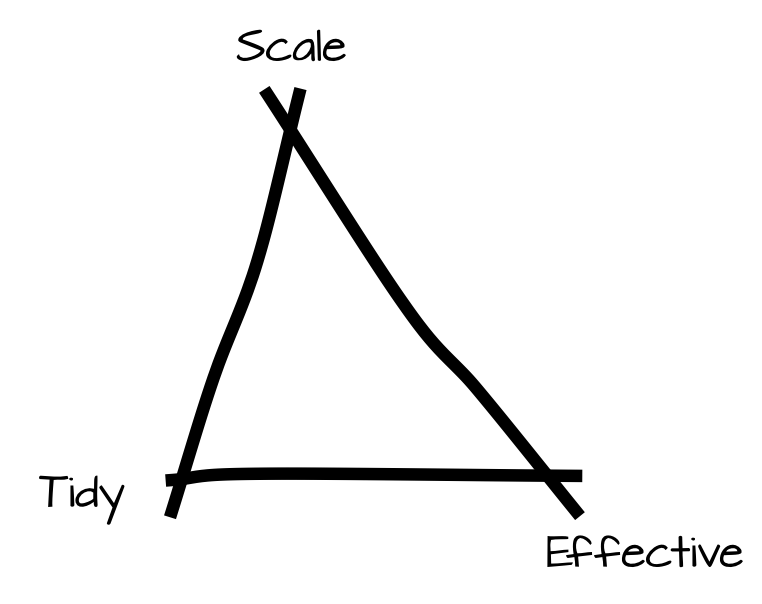Fred threw me an interesting idea about approaches and alignment yesterday, and as is the nature of such things, I’ve ended up in another place entirely. The other half of the thinking in this came from watching some Anime – Bleach in particular – where you see sometimes-interesting, sometimes-lame narrative tricks that keep fights interesting despite super powerful protagonists. One of the better ones is when the hero’s heart is not in the fight, and so they do poorly against an opponent they could usually squash because they’re hesitant or distracted. The passions that make them strong (compassion, justice, whatever) become weaknesses.
You can model this with aspects, straight up, but I really got in my head the idea of that emotional component of a fight, where what’s really going on (through stakes, escalation and so on) is that the hero’s reasons to fight are steadily being brought online, especially in a climactic battle. It’s a little meta, but storywise, that’s often what’s going on.
This in turn lead to thinking about baselines. If you’re running a game where everyone can kick ass, how do you model the guy who doesn’t? If everyone’s built from zero, then it’s no big deal, he’s just built differently, but if you’re going to assume a baseline of badassness, then he needs something to bring him down a step or two, which suggested the possibility of approaches with negative values.
That (and the discovery of an old character sheet) lead to some thoughts about Exalted’s four Virtues ( Compassion, Temperance, Conviction and Valor) and how they’re potent but double edged, but how that’s more the domain of aspects in Fate, and that lead to a leap which seemed very obvious in retrospect – aspects are approaches, or very nearly so, so why not mash them up further?
That is to say, every aspect is effectively an approach with a +2 (or –2) value, with rules surrounding when and how often you can apply it. And viewed that way, there’s no real reason that the value of 2 needs to be set in stone – we can embrace the idea of variable potency by simply having it be baked right into the aspect – I’m a knight of the cross (3) and a drunk (1) but I’m also a secret freemason (2). Not only do those have different mechanical weights, they enrich the data set. Consider the character I just described, and contrast her with I’m a knight of the cross (1) and a drunk (2) but I’m also a secret freemason (3).[1] Tells a different story with the same elements.
Similarly, for scene aspects, size can tell a story, so there’s a difference between On Fire (1) and On Fire (2).[2]
Plus, this also allows for a trick that solves one of the great communication problems surrounding aspects – I can explicitly write down how I want it played. That is, if I note a number (2) then I’m saying that’s a normal aspect that can hinder or help me. But if I want, I can explicitly note it as positive or negative (+2 or –2) (though I can’t think of many reasons to do the latter) to indicate that it can only be used in that way. That’s important mechanically, but it’s more important as a communication to the GM and the table that makes it clear where I do and do not want my safe zones to be.
Ok, yes, at this point were going far enough from Fate Core that this probably would merit its own build, so I’m going to have to sketch it out some, maybe run a game or two, but I have to say, I’m a little excited by this line of thinking.
-
Parenthetical numbers also allow for these things to be called out as aspects in plain text without additional formatting, which is handy if you’re going to steal HQ’s 100 word chargen. Which you should. In fact, it’s a great way to do pre-gens, since you could leave the blanks, and let the player come to the table and weight them. ↩
-
That’s actually the tip of a very big mechanical iceberg. By allowing the improvement or diminishment of aspects, you open the door to a whole new approach to how aspects are mechanically interacted with. Just putting a flag in that for the moment, since that’s totally it’s own subject. ↩

